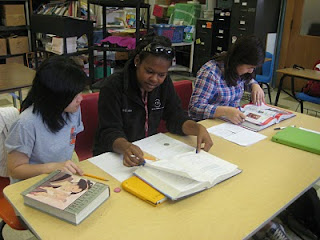Champaign-Urbana: May Day Immigration Reform Rally

by Ann Abbott photo by by Armand Emamdjomeh from a New America Media blog post . Tomorrow (Saturday, May 1, 2010) at 11:00 am there will be a rally at the County Courthouse in downtown Urbana to Protest SB1070. Inform yourself. Read the press release about the rally , become a fan of the IDream Coalition on Facebook , subscribe to the IDream-Illinois blog , and visit the website of the Illinois Coalition for Immigrant and Refugee Rights (ICIRR) to view information about immigrants' rights in Illinois and volunteer opportunities. UIUC Spanish community service-learning students (SPAN 232 & 332): you can attend the rally and count those hours towards your 28 hours of required service learning work by following these instructions. Attend the rally. Arrive on time. You can observe or participate; it's up to you. Take a picture of yourself at the rally. (This is the only way for me to confirm you attended.) Se...














